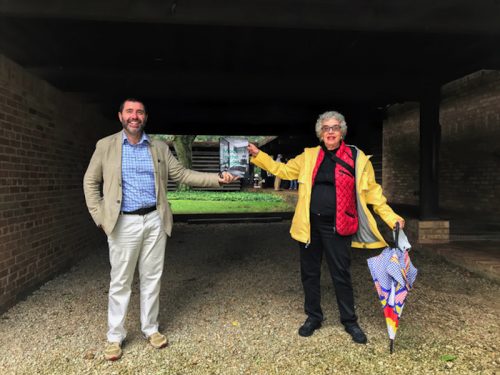
BY JUDY CARMACK BROSS
Featuring over fifty private residences designed by renowned and lesser-known architects, lush photographs, and definitive essays by its co-authors Susan Benjamin and Michelangelo Sabatino, Modern in the Middle: Chicago Houses 1929-1975 is the book you want to get lost in during the pandemic.

Michelangelo Sabatino and Susan Benjamin pose with the book.
It is not a surprise that during quarantine, houses from this period that are on the market are bewitching buyers. As Benjamin explains, “They are often out of the city, set in nature, and, frequently, with great views. They are of all sizes and offer a pleasant way of living. I live in a 1941 redwood and glass house designed by Larry Perkins of Perkins, Wheeler & Will, and I am sitting on my porch as we speak. It is very tranquil.”
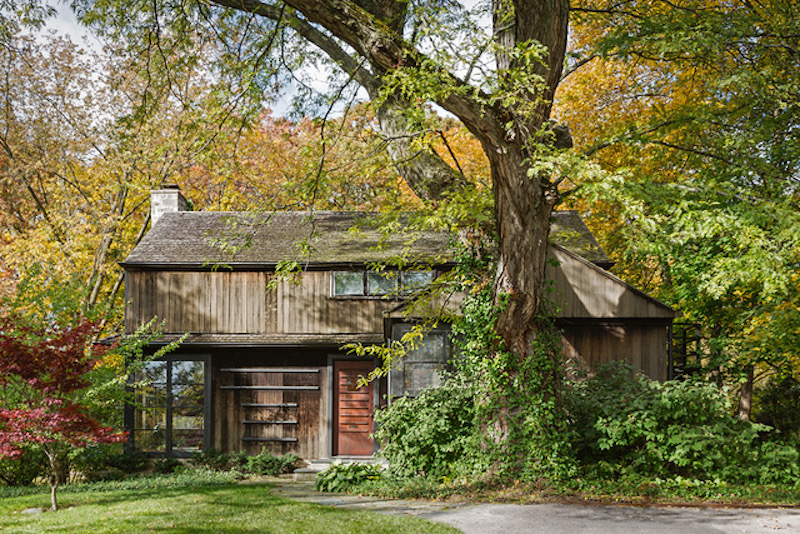
Ruth Danielson and Hilmer V. Swenson House (Benjamin House), Highland Park, 1941. Photo courtesy William Zbaren.

Sylvia Valha and Francis J. Benda House (Ambrose-Sabatino House), Riverside, 1939. Photo courtesy William Zbaren.
Sabatino, who lives in a modern house in Riverside, says, “The houses we selected are sophisticated but not ostentatious. A number of them are one-story, flat-roofed pavilions, usually of brick, wood, or steel, with large windows to let in the light and the surrounding nature. There were parcels of land available across Chicagoland in such cities and villages as Highland Park, Flossmoor, Lake Forest, Riverside, Evanston, and more. The commissioning clients were mostly middle class professionals who wanted to live in modern houses. Our title Modern in the Middle refers to middle, or upper-middle class, the Midwest, and the mid-century time period.”

Homer Grooman, “Chicagoland Panorama,” 1960 (Chicago Association of Commerce and Industry).
Trained as an architect, preservationist, and historian, Sabatino came to the Illinois Institute of Technology six years ago as professor and director of the PhD program, and recently served as interim dean. “It is always a good thing to get to know the city where you live by writing about its architecture,” he explains.
His recent and forthcoming books include Canada: Modern Architectures in History with Rhodri Windsor Liscombe, 2016; Avant-Garde in the Cornfields: Architecture, Landscape, and Preservation in New Harmony with Ben Nicholson, 2019; Making Houston Modern: The Life and Architecture of Howard Barnstone with Barrie Scardino Bradley and Stephen Fox, 2020; and Carlo Mollino: Architect and Storyteller with Napoleone Ferrari, 2021.
He soon met Benjamin, a Chicago preservationist and architectural historian, who had dreamed of authoring this book for over 40 years. During that time, she wrote two books for Acanthus Press with architect Stuart Cohen: Great Houses of Chicago, 1871-1921 and North Shore Chicago, Houses of the Lakefront Suburbs, 1890-1940. “Since 1976 I have been researching modern buildings, even developed a lecture on the history of the shopping mall, always wanting to learn more,” she says.
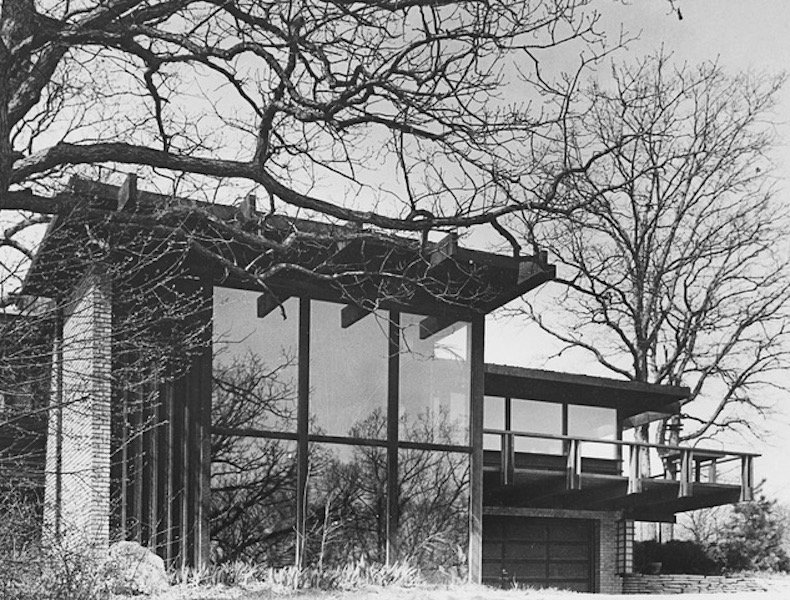
Ruth Koier and Laurence Sjoblom House, Lemont, 1960. Photo courtesy Chicago History Museum.
The late Russell Lewis, former chief historian and executive vice president of the Chicago History Museum, played a key role in making the book the beauty that it is. Lewis facilitated access to historic photographs by Chicago-based Hedrich Blessing studios in the collection of the History Museum. “Just before he died, he told us that scholars need to have access to photographs in their collection, and he wanted to make sure that their wonderful collection got wider usage,” Benjamin reveals. The 375 historic images in the book also include those from the Ryerson and Burnham Libraries at the Art Institute. Monacelli Press is its publisher.
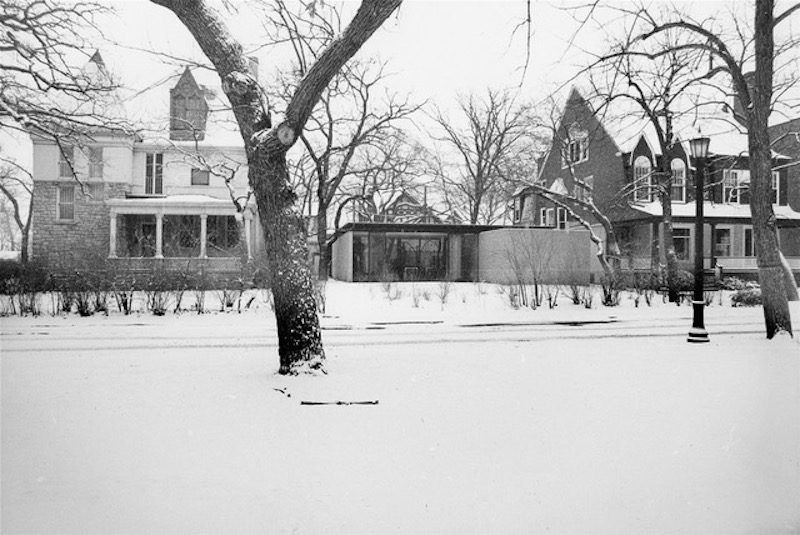
Sheila Adelman and David Haid House, Evanston, 1969. Photo courtesy Chicago History Museum, Hedrich-Blessing Collection.

Vine Itschner and Herbert Bruning House, Wilmette, 1936. Photo courtesy Chicago History Museum, Hedrich-Blessing Collection.

Caroline Sinclair and Philip Will Jr. House, Evanston, 1937. Photo courtesy Chicago History Museum, Hedrich-Blessing Collection.

Rachel Brin and Ralph Helstein House, Chicago, 1951. Photo courtesy Chicago History Museum, Hedrich-Blessing Collection.
A source of pride to both authors is that when a house is featured, it lists both the name of the husband and the wife, something that is hardly, if ever, seen. The book also includes diversity of gender, race, and ethnicity of architects and homeowners. Black architect John Moutoussamy was part of the post-World War II wave of veterans on the GI Bill who studied at IIT. He purchased a lot in Chatham on the South Side and built a house for his wife, Elizabeth Hunt, later a graduate of the Harrington Institute of Interior Design. He was a protégé of Mies and designed the Johnson Publishing Company headquarters in the Loop in 1972.
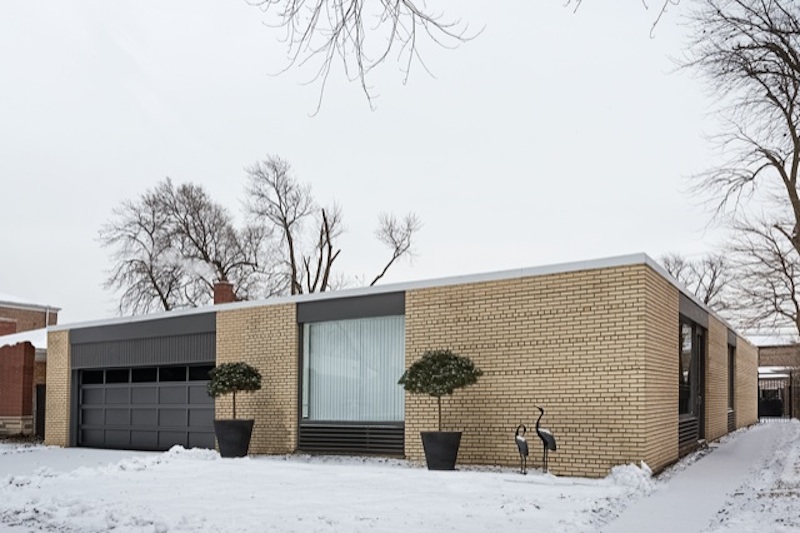
Elizabeth Hunt and John W. Moutoussamy House, Chicago, 1954. Photo courtesy William Zbaren.
Benjamin explains that European Modernism was officially recognized in 1929, and the Fisher House of that year is often referenced as the first International Style house in America. “The 1933 Century of Progress World’s Fair here with its ‘House of Tomorrow by George Fred Keck’ played a large role in popularizing modern houses,” she says.
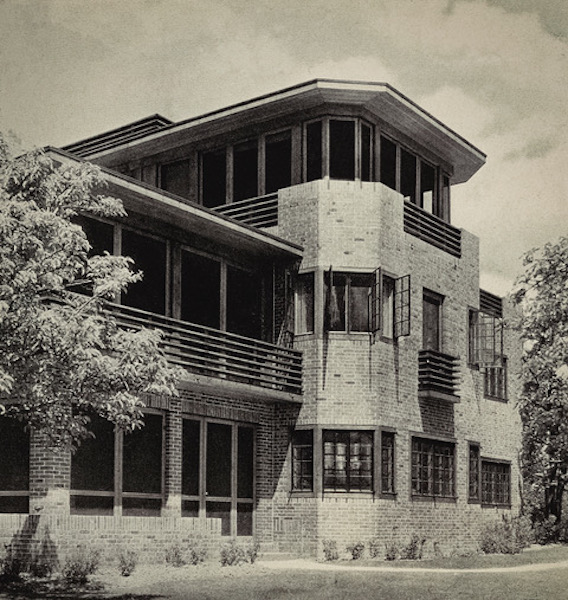
Katherine Dummer and Walter T. Fisher House, Winnetka, 1929. Photo courtesy Architectural Record.
Benjamin digs deeply into the influences on Chicago’s residential architecture by Frank Lloyd Wright and Mies van der Rohe, whom she calls “the giants in the room”: “Wright appeals to your sense of how things feel and look. He embraces the experience of a house in nature. As a very young architect, Mies began to use large panes of glass to relate organically to the world outside. There is a sense of interrelation and order in everything he does. Everything is related to each other just like parts in the human body.”
Sabatino, originally from Canada and having studied in Italy (Venice) and the United States (Cambridge), starts his introductory essay with an interesting observation: “The modern house can be said to have acted as a receptacle of seemingly infinite capacity for new ideas,” adding, “These weren’t weekend homes but permanent residences. Clients wanted the overall experience, and this was reflected in the furniture, housewares, and art they bought for their homes. With the Furniture and Merchandise Marts along with Baldwin Kingrey (a store opened by Jody Kingrey, Kitty Baldwin Weese, and Harry Weese), owners had easy access to modern design.”
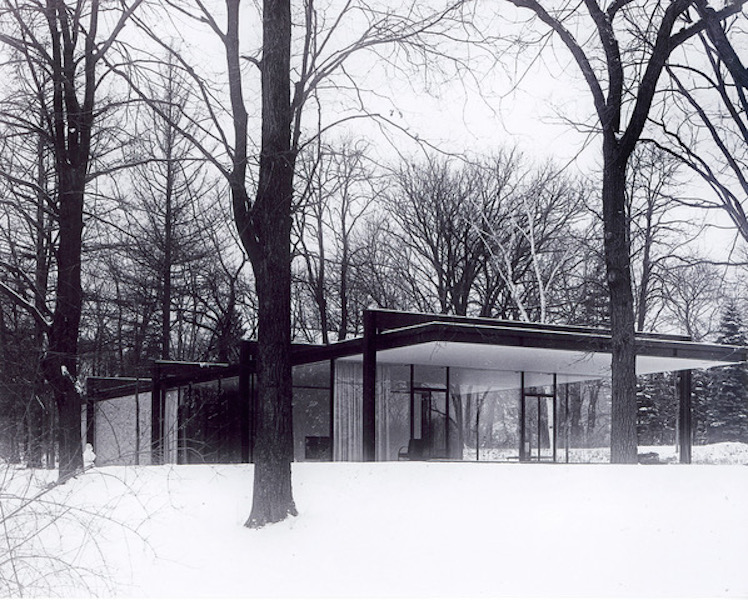
Doris Curry and Jacques Brownson House, Geneva, 1952. Photo courtesy Geneva History Museum.

Joan Henderson and George E. Johnson House, Chicago, 1963. Photo courtesy William Zbaren.
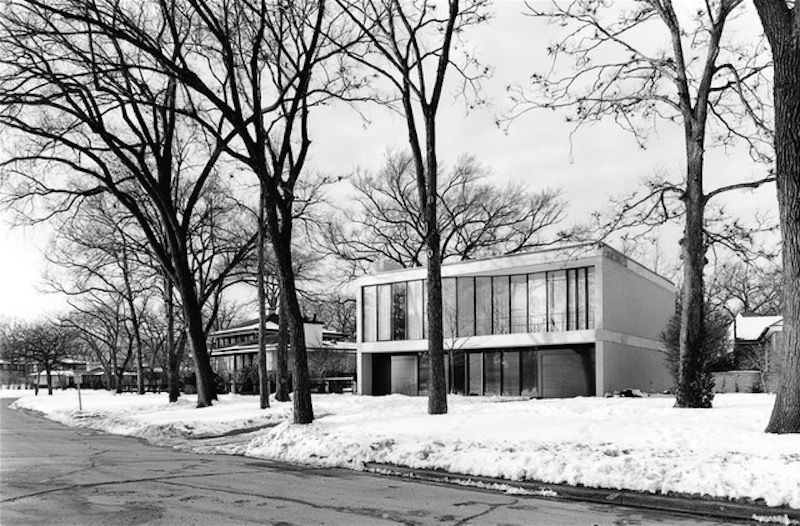
Ruth Nelson and Robert J. Freeark House, Riverside, 1975. Photo courtesy Bob Thall.
Sabatino feels as though they have only scratched the surface: “There are many more houses that we did not include—I would love to write volume two. I feel right now that my job is to get the word out.”And the two authors are doing just that. On October 15 they are presenting a virtual lecture followed by a panel discussion organized by IIT’s Mies Society, the College of Architecture, and the Chicago Architecture Center. It will be moderated by Reed Kroloff, Dean of the College of Architecture, with special guests including Jeanne Moutoussamy-Ashe and Margaret McCurry, who grew up in houses designed by their fathers, who were both IIT architecture graduates.
In the meantime, both authors are enjoying beautiful early fall days from the wide windows of their own modern homes, whose photos they share with readers of Modern in the Middle. Sabatino says, “We hope future scholars will expand upon our work.”
***
Modern in the Middle is available at Phaidon.com, Amazon.com, or your local bookstore, like Chicago’s black-owned Semicolon Bookstore (click here to purchase).



